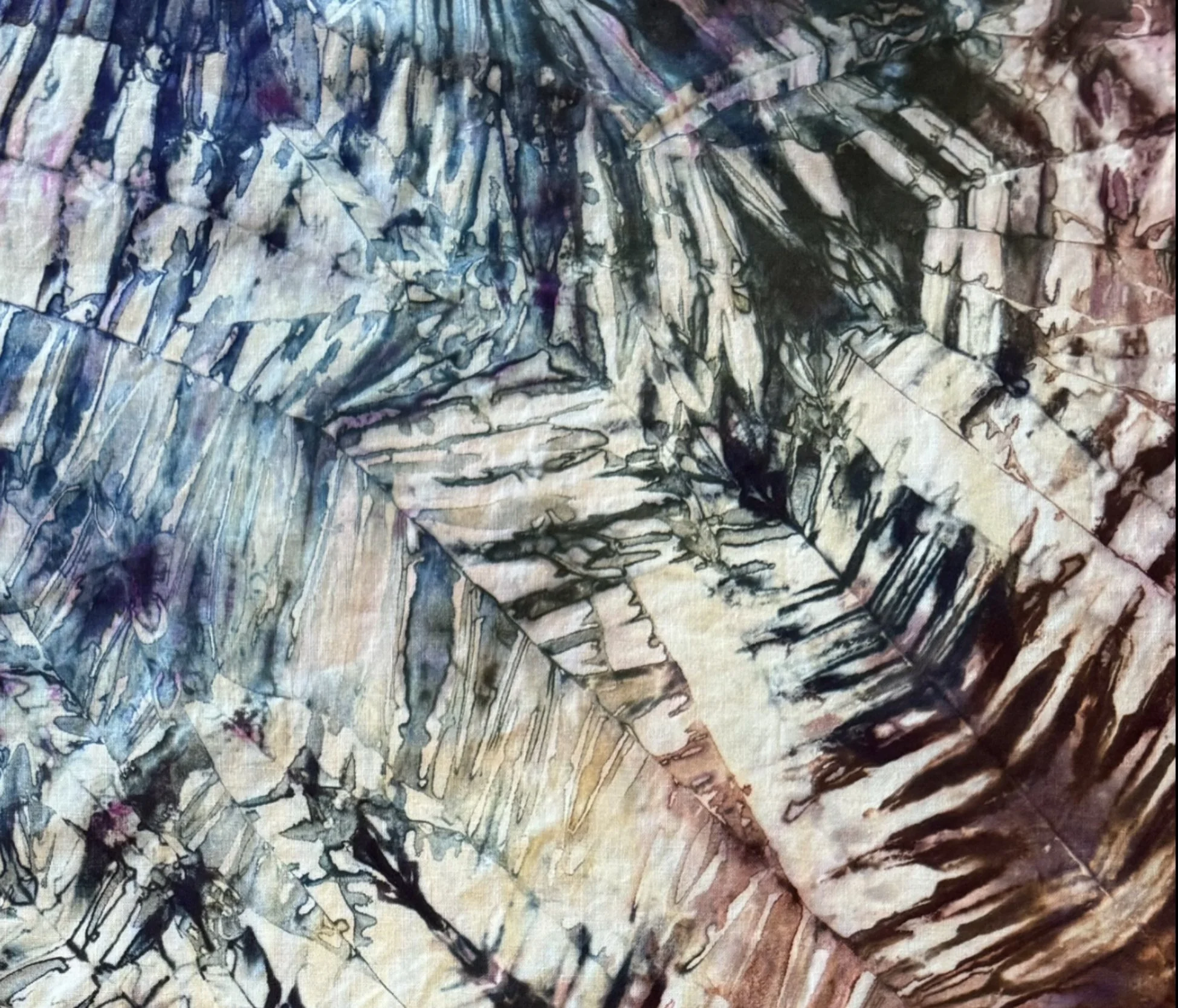Arashi Shibori Style Techniques with Ice Dyeing
My first introduction to Nui Shibori occurred at the Midwest Weavers Conference in 2016. It’s been fun this January to broaden my Shibori learning with Ice Dyeing and snow! This past summer I did some small Arashi samples with a 2” diameter PVC pipe and 5” x 5” cotton fabric squares which are published in my Ice Dyeing Workshop Monograph.
I have been further studying and reading Shibori The Inventive Art of Japanese Resist Dyeing by Wada, Rice, and Barton first published in 1983. It focuses on tradition, techniques, and innovation. Arashi, “storm” is a pattern resist dyed process of wrapping cloth around a pole, compressing into folds, and dyeing. Much of the diagonal patterns suggest rain driven by a strong wind. The authors indicate that not even the most skillful workers have complete control. It was invented in 1880 for the production of indigo-dyed cotton using 13 foot wooden poles and special trough-like vats.
My first experiment with larger pieces of cloth was a cotton knit Chico’s top. It was wrapped and slightly twisted around a 2” diameter pole and I was delighted with the subtle formation of diamonds below the buttons and to the right of the buttons (photo 1).
I decided larger fabric pieces might benefit from larger poles! And my examples this January have used a PVC pipe 3.5” in diameter (photo 2). This time I was more intentional and planned some folds. I like to refer to it as airplane style folds. I used sewing thread to baste some of the folds in place and started by securing the nose of my airplane with a rubber band and wrapping around the pipe with tie die string and compressing and twisting in sections. An attempt was made to refold the pleats back into the original airplane shape to get a feel for its shape prior to wrapping, folding, and twisting (photo 3).
I decided it was worth the effort! Washing and removing the tie dye sting revealed some chevrons where pleated as well as irregular lines. The resulting fabric reminded me of dendrites or pseudo dendrite fossils. Dye colors used included Stormy Skies, Peacock Blue, Nightshade and a very small amount of Wand Wood and even smaller amount of Indigo Blue. DOI methodology was used with ice and snow allowing for a 24 hour batch time prior to washing.
Removing the string is best done by cutting sections on portions of the pipe that do not have fabric (photo 1). The string actually makes larger areas than anticipated with dark dye outlines on either side of the string. It is almost reminiscent of spalted wood grains. A portion of the wet fabric is shown in photo 2. My favorite portions of the fabric are shown in photo 3 after drying.
A second fabric was dyed with a random approach: no prefolding or stitching. Different dyes were used: Strawberry Skies (light), Indigo Blue, Wand Wood, and Port Plum. In addition, I used a single layer of fabric as opposed to a double layer. The resulting fabric had beautiful color movement and interaction although some areas not scrunched tightly ended up very dark (see sink photo). The close up view shows all the color variations. Lastly, I will study these color interactions and determine if I will dye a batch of yarn. I’ll be teaching ice dyeing to the Ann Arbor Fiber Arts Guild in March. I look forward to returning to my Michigander town where I lived for three years in the early 90’s.








